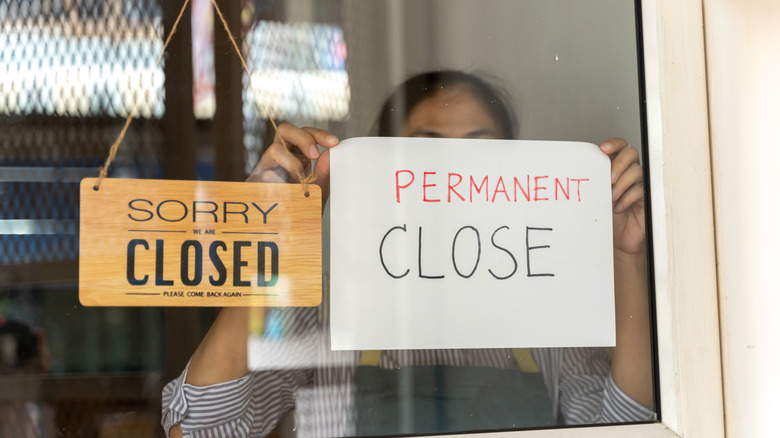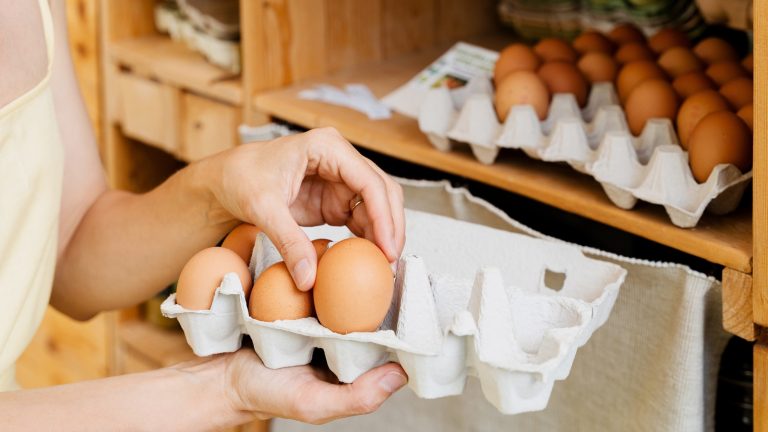In May of 2019, it was announced that the restaurant group owned by celebrity chef Jamie Oliver was going into administration and shutting down 22 of the company’s 25 locations in the United Kingdom. Going into administration is a process that comes when a company is either insolvent or soon will be. Administrators take control of the company’s assets and decide if it can be saved or must be liquidated. This came after 17 years of empire-building for the man known as “The Naked Chef,” and left an estimated 1,000 workers out of a job. The demise of the chain once described as having the makings of a “recession-proof cash cow” revolved around a myriad of factors that coincided in such a way that recovery was impossible (via The Guardian).
At the time, Oliver’s company owned 86 restaurants: 25 in the U.K. and 61 worldwide. This included 25 branches of Jamie’s Italian, which had risen to popularity thanks to his championing of fresh, quality ingredients and mid-scale pricing. He expanded quickly, but this rapid expansion and the inevitable slip in detail-oriented care and consistency that came with it are some of the causes of the company’s financial woes. Jamie’s Italian also suffered from brand-identity confusion as Oliver (and his work) were portrayed as being for the everyman, yet the meals had high price tags. There was also seeming hypocrisy when Oliver, outspoken against climate change, partnered with Shell to provide food for its service stations, which tarnished his brand’s reputation.
Oliver’s restaurant closures did not apply to the company’s international locations, as they had been franchised, a process that allows third-party ownership while maintaining parent company standards. This is the same reason why, despite the Hooters chain going into bankruptcy, franchised locations throughout Florida and Chicago were unaffected.
Market factors and lack of adaptibility also hurt the company
Some of the reasons for these closures were outside Oliver’s control. In 2017, the U.K. announced it was leaving the European Union in a decision known as Brexit. The pound took a subsequent hit, and import costs rose considerably. Economic uncertainty led to a more wary consumer class. The chain ended up closing 12 of its U.K. locations in 2018, and Oliver was forced to contribute over £12 million of his own money to keep Jamie’s Italian afloat. In that way, Oliver’s personal success was a lifeline for the company. By being an icon of the food world, doing everything from television shows to giving tips on how to fish out egg shells, Oliver’s brand was shaken by various controversies, but he managed to withstand market pressures temporarily.
However, some factors were self-inflicted. Soon after the announcement of Jamie’s Italian’s financial difficulties, the restaurant was reviewed by highly-regarded food critic Marina O’Loughlin of the Times. We’d say how the review went, but the comparison of black truffles in pasta to “mouse poos in soup” and the phrase “a dismal pile of food” speak for themselves (per the Times).
Another point of blame was the lack of adaptation to a consumer base that increasingly wanted a more personal experience if they were to spend their hard-earned money. Oliver’s restaurants were a machine, which allowed for great initial success, but didn’t leave much room for creativity. Contrast this to the Serafina restaurant group in New York, which has stayed relevant for over 30 years due to constant evolution. Oliver has bounced back since 2019’s troubles, though. As of 2023, he owned 70 restaurants worldwide, though only one in Britain and none in the States.






